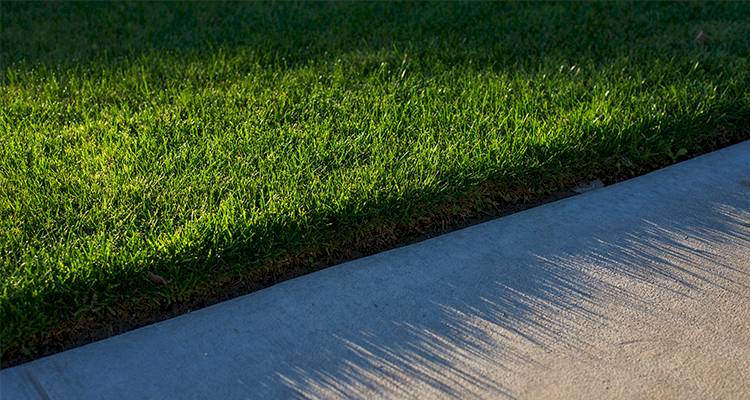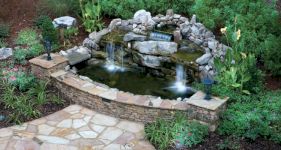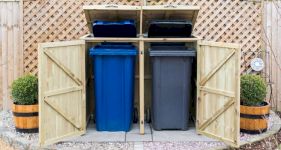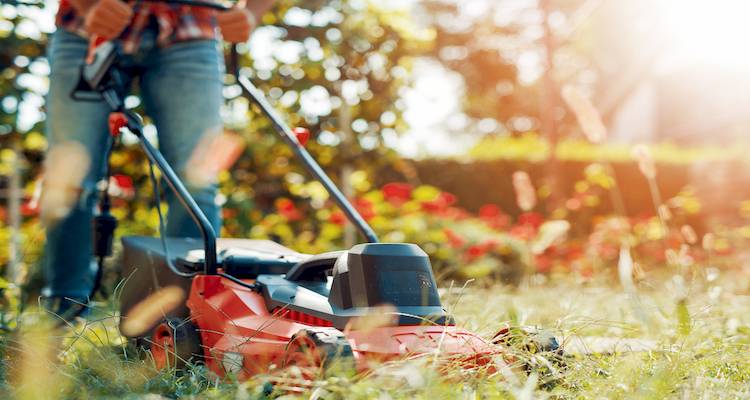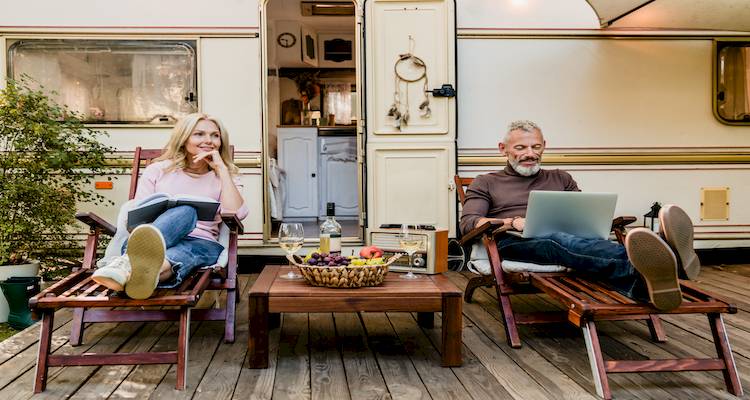How to Make a Compost Bin
Would you like to find out how to make a compost bin?
Then carry on reading to find out - with easy to follow instructions and step-by-step images.
So let's take a look...
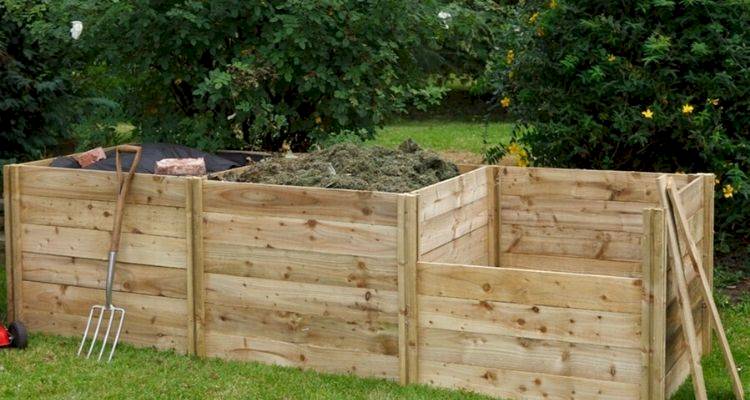
Table of Contents
- What is a Compost Bin?
- What Tools Do I Need to Make a Compost Bin?
- What Safety Equipment Do I Need to Build a Compost Bin?
- What Materials Do I Need to Make a Compost Bin?
- Planning Your Compost Bin
- Preparing to Build a Compost Bin
- How to Make a Compost Bin Yourself ? Step-by-Step Guide
- How to Clean a Compost Bin
- FAQs
What is a Compost Bin?
A compost bin is a container used for placing organic waste that can be turned into compost over time. Some compost bins are continuous – this means that you can keep adding waste to them.
Other compost bins create batches of compost with a set mix of ingredients that you have to add all at once.
With good-quality compost you can use it on your garden or mix it into potting compost for plants. If you need to dispose of any excess or if it's not produced a good enough quality, you can usually include compost with your general garden waste removal.
What Tools Do I Need to Make a Compost Bin?
Below is a list of the tools needed to build a DIY compost bin:
- Drill
- Screwdriver
- Saw
- Hammer
- Staple gun
What Safety Equipment Do I Need to Build a Compost Bin?
When working with timber for projects such as building a compost bin, there are several safety precautions to take. Although if you don't feel confident in building one yourself, you can always ask a local handyman to help.
- Protective gloves
- Safety goggles
- Dust mask
- Sensible footwear
What Materials Do I Need to Make a Compost Bin?
Here is a list of the materials that you’ll need when building a garden compost bin for your organic waste:
- Four pallets
- Corner brackets
- Screws
- Hooks
- Latches
- Hinges
- Plate brackets
- Rebar
- Chicken wire
- U-shaped nails
- Staples
Planning Your Compost Bin
Be mindful when choosing materials that if you're using treated wood, it needs to be free of toxic chemicals so there isn't any risk of it transferring into the compost during contact. Likewise, the same applies when building with any other material, as anything that may have a negative impact on the compost can defeat the purpose.
Also think about where you're going to put your bin, as the majority of people prefer to store their compost bin somewhere in the garden where it's tucked out the way. They can often be large and unsightly, as well as creating a naturally unpleasant smell due to the food waste.
Preparing to Build a Compost Bin
When preparing to build your compost bin, you will need to begin by gathering the materials needed for the job. You will need four pallets of equal or almost equal size. Old pallets are widely available, but you need to check that they’re safe to use by looking at the stamp on them.
The stamp should display the IPCC or EPAL logo plus the letters ‘HT’, which indicate the wood has been heat-treated and there’s no risk of toxic materials making their way into your compost. Avoid pallets with the letters ‘MB’ on them as this indicated that they have been treated with the toxic pesticide Methyl Bromide.
How to Make a Compost Bin Yourself — Step-by-Step Guide
There are several ways in which you can make a compost bin. Below, we have created a step-by-step guide on how to build a pallet compost bin:
Step 1
If your pallets aren’t of equal size, begin by using a saw to cut them down to the same width so that the walls of your compost bin will be at the same height.
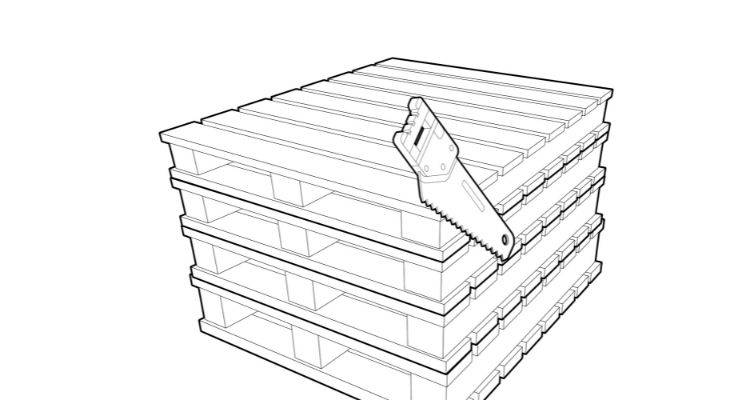
Step 2
Now begin joining three of the pallets together to create the back and sides of the bin. Line them up, lean them against each other and then screw them together to hold them in place. When finished, the two side walls should be flush with the rear wall.
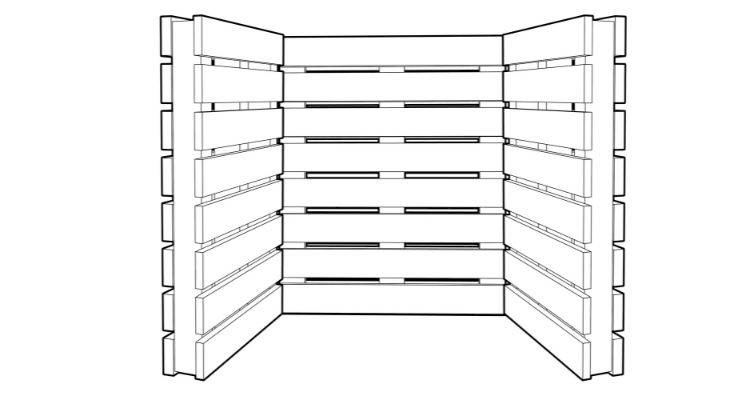
Step 3
Next, fit the corner brackets in each of the corners. You will need to fit two brackets to each corner, one at the top and one at the bottom. These can simply be screwed into place. Use as many screws as necessary to firmly attach them in position.
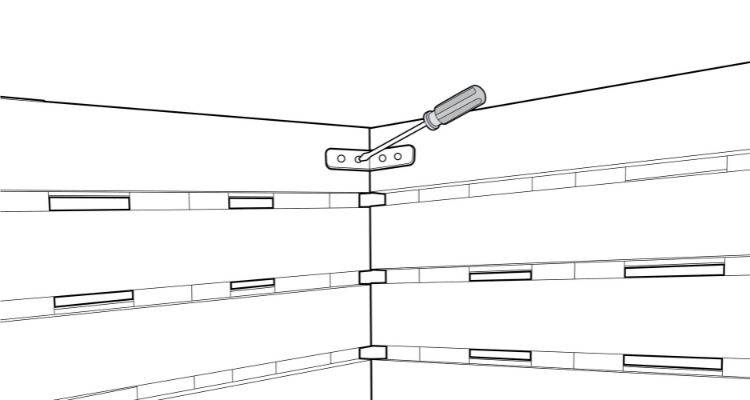
Step 4
The fourth pallet will be used to create doors. Using a saw, cut the pallet into two pieces about halfway up. Saw between the slats, cutting right up against the plank to create an even, tidy finish. Any offcuts can later be used to help level up the walls of the compost bin.
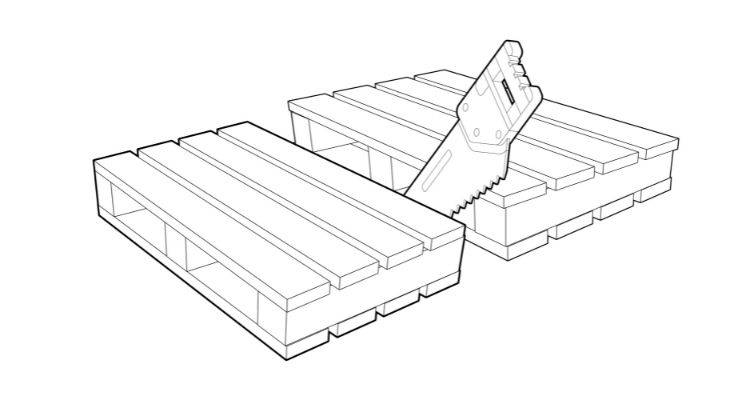
Step 5
Now attach the doors to the walls. Screw two hinges to each door. Attach the hinges on the outside so that the doors can swing open easily. Set the bottom door slightly off the ground to stop it from catching. Similarly, leave a slight gap between the bottom and top doors.
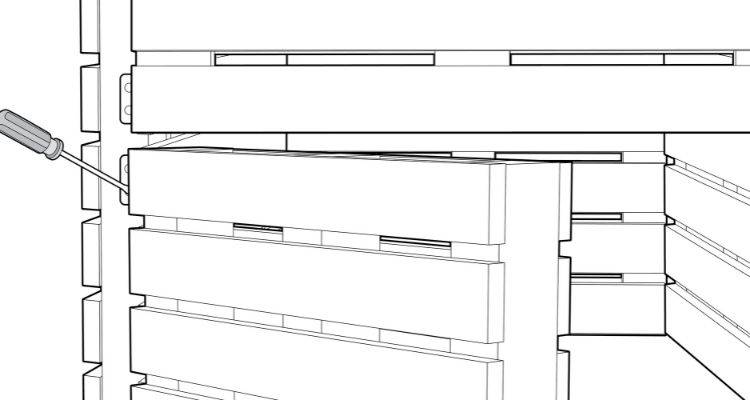
Step 6
Once the doors are in place, you can now install the hook and latches. Screw them into position towards the top of each door.
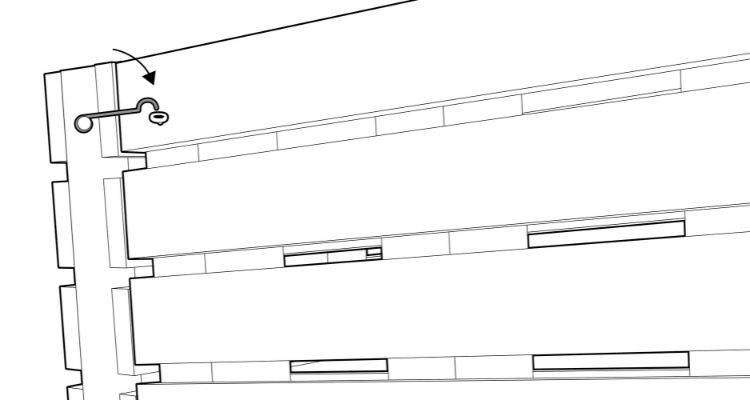
Step 7
If you want to make your compost bin extra sturdy, you can screw in additional plate brackets at the rear corners.
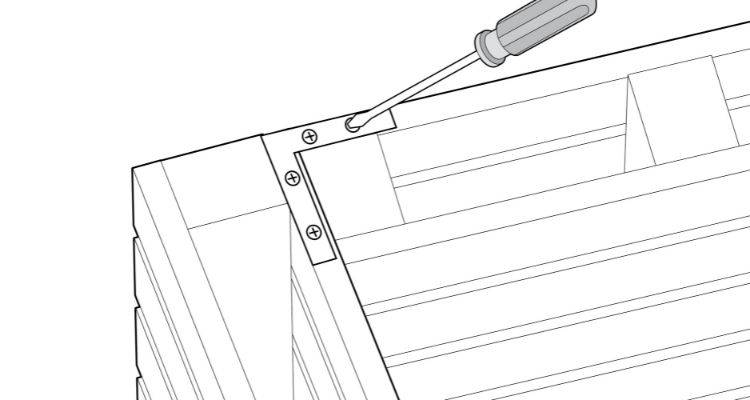
Step 8
The front of the compost bin can be further anchored into place by hammering in lengths of rebar on either side of the wall.
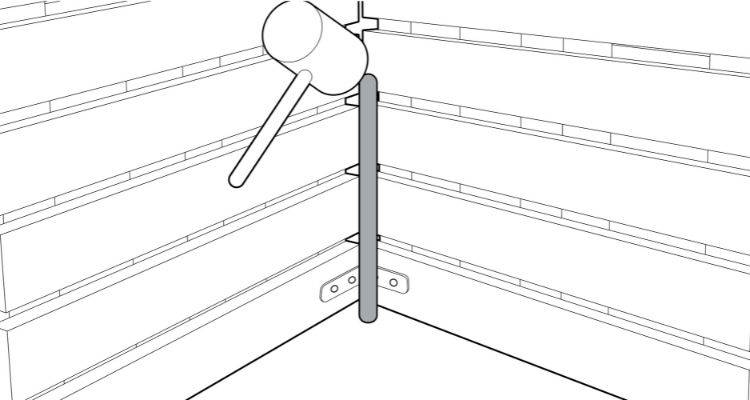
Step 9
Although it isn’t necessary, you may want to then apply a wrap of chicken wire to the outside of the bin to avoid the possibility of any stray contents falling out of the bin. Attach the wire or netting with u-shaped nails or a staple gun.
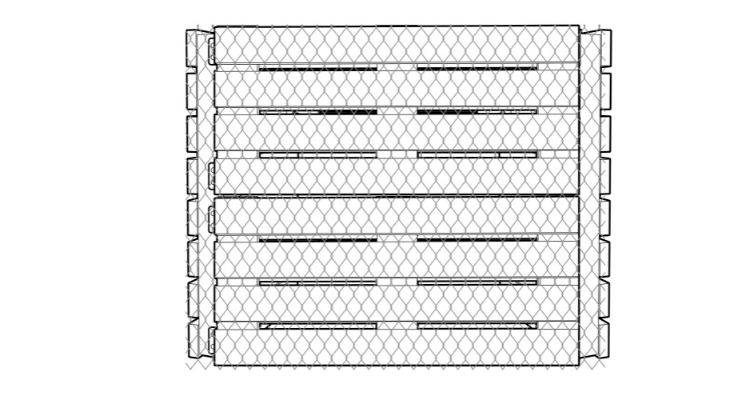
Step 10
Your compost bin is now ready for use. You should start filling the bin with a mixture of dried leaves and torn cardboard alongside grass clippings and kitchen waste, items such as coffee grounds and herbivore animal manure help produce particularly good compost. Try to create a balance of brown and green waste to help speed up the decomposition process.

How to Clean a Compost Bin
Although you don't need to clean your garden compost bin very often, it is worth doing at least once a year to help keep the smell to a minimum and deter any potential pests such as mice and rats.
When washing a compost bin, you’ll need to opt for natural cleaners. Instead of using soap that can damage the ecosystem, you should use vinegar, lemon, and baking soda to sanitize the bin and remove any odours.
Use your hose in combination with some of these natural cleaning agents to wash away dirt and keep your compost bin at its very best.

